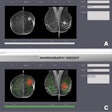SEATTLE - When it comes to the fight against cancer, radiologists are armed with formidable tools of detection, allowing them to see disease in its earliest stages. But is that really what the role of imaging should be? Do imaging experts run the risk of aiding and abetting in the unnecessary treatment of cancer?
Those are some of the questions Dr. Robert Stanley, the newly installed president of the American Roentgen Ray Society, asked attendees at the meeting's opening ceremony on Sunday. Stanley's talk was entitled "Inherent Dangers of Radiology Screening."
"Screening is a topic that has interested and concerned me with each advance [in imaging] that we’ve made," said Stanley, who is at the University of Alabama in Birmingham. "The one thing that I’m concerned about is that radiologists may not fully appreciate the incredible power that they have with their ability to detect cancers, especially preclinical occult cancers. They may not yet know what sort of message to deliver to the patients, as well as the referring physicians."
One message that they should not be delivering is that cancer, and cancer detection, is a "black and white issue. We have a problem in thinking that cancer is a binary issue. Either you have it or you don’t. It’s not that simple," Stanley explained.
Using renal cell carcinoma as an example, Stanley said that the parameters of the disease play a part in whether or not its detection is significant.
"Studies have shown that the prevalence of [renal] tumors in patients without a premortem suspicion of renal cell carcinoma depends on how closely the kidneys are examined after death," he said. "If you were to use a macro-inspection where you would feel something that was about 2 cm in diameter, then the prevalence of clinically unsuspected renal tumors, at a postmortem exam, is somewhere around 1-2%." But that percentage jumps to 22% if the kidneys are examined by serial 2-3-mm section imaging.
"That 2-3 mm is a significant figure because that’s how we’re scanning people these days," Stanley said. "When we do a CT angiography of someone’s abdominal aorta, we are sectioning that person’s abdomen with extremely thin slices. We see all kinds of stuff."
And is that "stuff" important, given that the current age-specific prevalence rate of kidney cancer is less than 1% in the general population, and that less than one-half of 1% of all deaths in the U.S. in a given year could be attributed to kidney cancer?, he asked.
While imaging allows investigators to spot those cancers, the techniques need to be refined so that they differentiate between truly cancerous lesions and those that are not going to develop into a life-threatening illness.
Showing an abdominal CT scan, Stanley pointed out that "as we roll through both kidneys, there are multiple low-density lesions in these kidneys. When we’re getting down to 3 mm, we may have a problem knowing exactly what to say about them."
The problem with many screening trials, Stanley said, is that they may only be measuring the changing patterns of cancer diagnosis instead of the changes in cancer mortality. Some of the biases in screening studies that Stanley cautioned attendees to look out for included the lack of distinction between cancers that grow rapidly and those that progress more slowly; self-selection whereby patients voluntarily decide to join a screening program; and overdiagnosis in which questionable malignancies are found.
Another issue that radiologists must contend with is public perception of their diagnostic skills. Breast cancer screening trials best exemplify that double-edged sword: As reports of mammography’s success in detecting cancer continue to issue forth, the expectations of the public may be unrealistic.
"There are more malpractice lawsuits related to mammograms than anything else in radiology. It has something to with the false expectations [of the public]," Stanley said. For example, a woman returns to her mammographer for a screening exam after two years. If a lesion is found on the latest mammogram that was not detected two years earlier, the mammographer is "in a heap of trouble," he said. "Someone out there will be able to find that cancer on that study two years earlier."
Rather than aiming to put out a feel-good message about cancer screening, researchers need to focus on defining the critical point of the disease, or when treatment will do the most good. In some cases, screening may not be the answer.
"There are some cancers that are not proven to be detectable before that critical point," Stanley said. "If you can prove that, with well-structured trials, then there is no sense in doing the screening. You are wasting your time. If the critical point comes after people develop signs and symptoms, then there’s no point in doing screening either. There is a window when screening does make sense."
With the advent of screening on demand or "yuppie scans" -- in which consumers will pay for a full-body scan in order to determine if they have any sort of illness at all -- imaging professionals should question the power that they have on-hand.
"Each incremental lowering of the [cancer] detection threshold increases the chances that the treatment will benefit patients with clinically significant disease. But that is at the cost of increasing the proportion of diagnosed patients who have clinically insignificant disease," Stanley warned. "You have a serious responsibility to do what is absolutely best for your patients and not just to turn everyone into a sick person."
By Shalmali Pal
AuntMinnie.com staff writer
April 30, 2001
Misdiagnoses, lack of supervision, and poor communication land radiologists in court, May 17, 2000
Copyright © 2001 AuntMinnie.com















